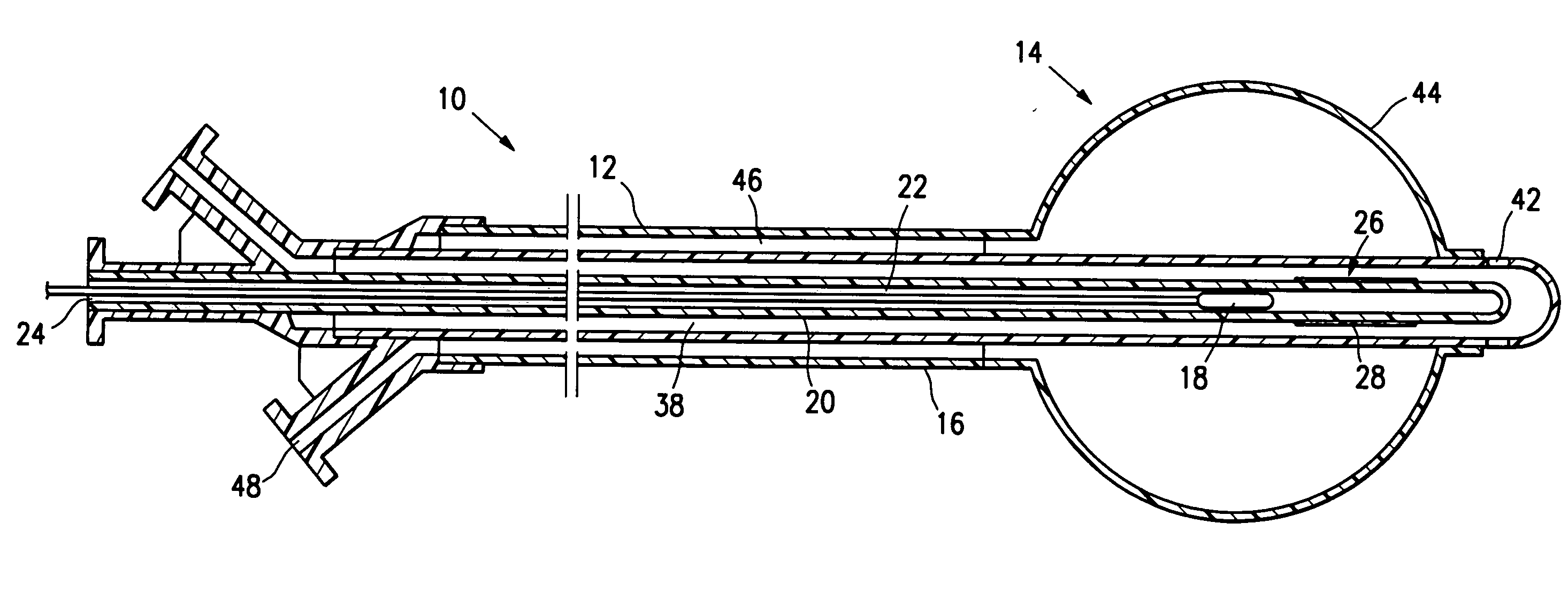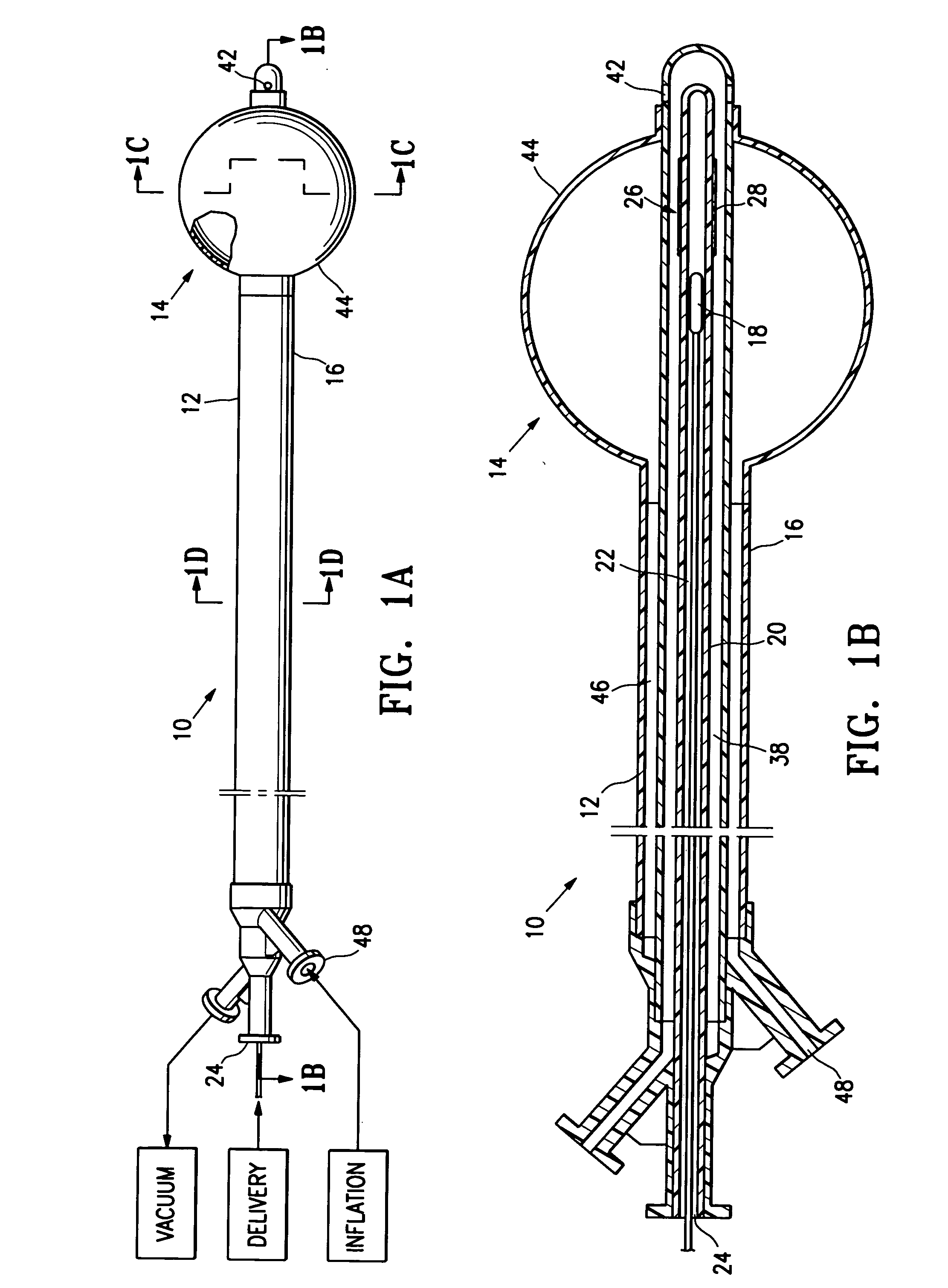Methods for tissue irradiation with shielding
a shielding and tissue technology, applied in the field of medical treatment devices and methods, can solve the problems of destroying the healthy tissue of the tissue, the uniformity or regularity of the cavity of the tissue, and the radiation, so as to reduce or minimize the damage of the irradiation and uniform tissue irradiation
- Summary
- Abstract
- Description
- Claims
- Application Information
AI Technical Summary
Benefits of technology
Problems solved by technology
Method used
Image
Examples
Embodiment Construction
[0052]The present invention provides devices and methods for treatment of a patient's body cavity or other intracorporeal site. For example, devices and methods having features of the invention are used to deliver treatment into a biopsy site or into a cavity or site left after removal of cancerous tissue from the patient's body.
[0053]As shown in FIGS. 1A-1D a tissue treating device 10 embodying features of the invention includes an elongated shaft 12 with a treatment location 14 in a distal portion 16 of the elongate shaft 12. The treatment location 14 includes a source for a treatment agent such as a radiation source 18 which has a push rod 20 for advancing the source within the device. The elongate shaft 12 has a delivery lumen 22 which leads to treatment location 14 for advancement of the radiation source 18 to the treatment location. The elongated shaft 12 also includes a delivery port 24 in fluid communication with the delivery lumen 22 through which the radiation source 18 is...
PUM
 Login to View More
Login to View More Abstract
Description
Claims
Application Information
 Login to View More
Login to View More - R&D
- Intellectual Property
- Life Sciences
- Materials
- Tech Scout
- Unparalleled Data Quality
- Higher Quality Content
- 60% Fewer Hallucinations
Browse by: Latest US Patents, China's latest patents, Technical Efficacy Thesaurus, Application Domain, Technology Topic, Popular Technical Reports.
© 2025 PatSnap. All rights reserved.Legal|Privacy policy|Modern Slavery Act Transparency Statement|Sitemap|About US| Contact US: help@patsnap.com



